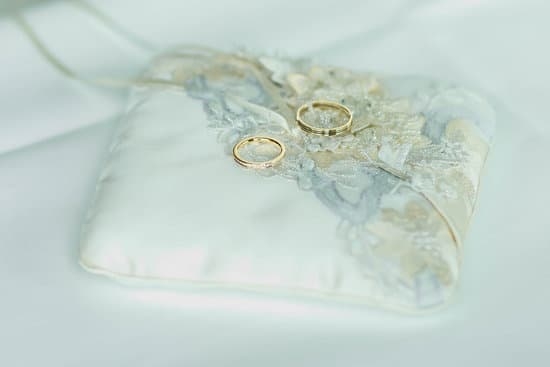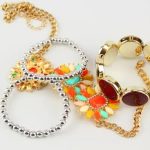The history of costume jewelry holds a rich and fascinating story that spans across cultures and centuries. Costume jewelry, often referred to as fashion jewellery, has played an integral role in the adornment of individuals throughout history. Understanding its evolution provides valuable insight into the significance of jewelry in fashion and culture.
Costume jewelry encompasses a wide range of decorative pieces made with non-precious materials such as glass, plastic, brass, or base metals. While it may not hold the same intrinsic value as fine jewelry, it has been instrumental in expressing personal style and trends over time. Exploring the history of costume jewelry allows us to appreciate its impact on fashion and its cultural relevance.
In this article, we will embark on a journey through the ancient origins of adornments, exploring the materials used and their cultural significance. We will delve into the Renaissance era, where costume jewelry was heavily influenced by royalty and nobility. The Industrial Revolution brought about significant changes in production and accessibility to costume jewelry, leading us to discuss famous designers and manufacturers during this time.
Additionally, we will explore other pivotal periods such as Art Deco and World War II and their influence on costume jewelry. Finally, we will examine the modern revival of costume jewelry, including contemporary ethical practices and its popularity in today’s fashion industry.
Ancient Origins of Adornments
Ancient civilizations have a rich history of using adornments and decorative jewelry for various purposes. From the ancient Egyptians to the Romans and Greeks, jewelry has played a significant role in their cultures.
These early examples of costume jewelry were often made from materials such as beads, shells, bones, and metals like gold and silver. The cultural significance of jewelry in ancient civilizations cannot be overlooked, as they were often used to symbolize social status, religious beliefs, or as protective talismans.
During the ancient times, ornamental jewelry was not only limited to personal adornment but also held symbolic and practical uses. For example, in Egypt, amulets and beads were worn for protection against evil spirits, while fashionable headpieces and necklaces were reserved for high-ranking members of society. In Rome and Greece, intricate designs and motifs were incorporated into their jewelry, showcasing their craftsmanship and creativity.
The history of costume jewelry during ancient times serves as a foundation for understanding how these early civilizations valued beauty, aesthetics, and craftsmanship. The use of different materials and the intricate designs reflected the artistic expression of each culture.
Today’s modern costume jewelry draws inspiration from these ancient origins, with designers often incorporating historical elements into their contemporary pieces. Understanding the history of costume jewelry is essential not only for appreciating its aesthetic appeal but also for recognizing its cultural significance throughout different periods in history.
Evolution of Costume Jewelry in the Renaissance Era
The Renaissance Era was a pivotal period in the history of costume jewelry, marked by significant cultural and technological developments that influenced jewelry design and production. During this time, costume jewelry evolved as a form of adornment that reflected the influence of royalty and noble families. The Renaissance saw a resurgence in the use of decorative jewelry as a symbol of wealth, power, and status.
Among the most notable influences on costume jewelry during the Renaissance Era was the patronage of royalty and nobility. Wealthy individuals commissioned elaborate pieces of jewelry to showcase their social standing and prestige. This demand for luxurious adornments spurred advancements in jewelry-making techniques, leading to the creation of intricate designs that featured precious gemstones and intricate metalwork.
Technological progress also played a crucial role in the evolution of costume jewelry during the Renaissance Era. Jewelers began incorporating innovative methods such as enameling, filigree, and gemstone cutting to create intricate and detailed pieces. The rise of trade routes facilitated the importation of exotic materials such as pearls, corals, and ivory, expanding the range of materials available for creating costume jewelry.
| Renaissance Influences | Technological Advancements |
|---|---|
| Patronage of royalty and nobility | Innovative methods – enameling, filigree |
| Cultural significance in showcasing wealth | Importation of exotic materials |
Industrial Revolution and the Rise of Mass Production
During the Industrial Revolution, there was a significant impact on the production and accessibility of costume jewelry. The technological advancements in manufacturing allowed for mass production of jewelry, making it more affordable and accessible to the middle class. This era marked a shift from handcrafted pieces made by skilled artisans to the mechanized production of jewelry, leading to widespread availability and consumption.
Impact of Technological Advancements
The introduction of new technologies such as steam-powered machinery and mass-production techniques revolutionized the jewelry-making process. This led to increased efficiency and reduced production costs, allowing jewelry to be produced at a much larger scale than ever before. With the ability to produce more pieces in less time, manufacturers were able to meet the growing demand for costume jewelry from an expanding consumer market.
Famous Designers and Manufacturers During This Time
The Industrial Revolution also gave rise to famous designers and manufacturers who played a key role in shaping the costume jewelry industry. Companies such as Trifari, Coro, and Eisenberg emerged as leaders in producing high-quality costume jewelry at affordable prices. These brands introduced innovative techniques and designs that set the standard for mass-produced costume jewelry during this period.
The Modernization of Costume Jewelry
As society became more industrialized, costume jewelry evolved from traditional styles to embrace modern and contemporary designs. With the use of new materials such as celluloid, bakelite, and rhinestones, jewelers were able to create bold and eye-catching pieces that captured the spirit of the times. The industrial revolution paved the way for a new era in costume jewelry, marking a significant shift in its production, design, and availability.
Art Deco and the Golden Age of Costume Jewelry
The Art Deco movement had a significant impact on the world of costume jewelry, ushering in a golden age of innovative design and glamour. During this period, jewelry designers were influenced by the sleek and geometric aesthetic of Art Deco, resulting in bold and striking pieces that embodied the spirit of the era.
Key Points
- Influence of Art Deco movement on jewelry design: The Art Deco movement, which emerged in the 1920s, was characterized by its sleek and modern aesthetic. Jewelry designers during this time were inspired by geometric shapes, bold colors, and intricate patterns, leading to the creation of stunning pieces that reflected the spirit of the era.
- Glamorous Hollywood and the impact on jewelry trends: The rise of Hollywood during the Golden Age of Cinema had a profound influence on fashion and jewelry trends. Movie stars and celebrities became style icons, often adorned with exquisite costume jewelry that captured the imagination of audiences around the world.
- Iconic pieces and notable designers of the era: The Art Deco period produced an array of iconic costume jewelry pieces that are still revered today. Designers such as Coco Chanel and Elsa Schiaparelli made significant contributions to the world of costume jewelry, creating timeless pieces that continue to inspire contemporary designers.
The Enduring Legacy
The legacy of Art Deco continues to influence contemporary costume jewelry design. Its timeless appeal and innovative approach have left an indelible mark on the industry, with designers drawing inspiration from its bold aesthetic and unique artistic vision. By understanding the history of costume jewelry during this period, we can appreciate its enduring legacy and continued relevance in today’s fashion landscape.
World War II and the Influence on Costume Jewelry
World War II had a significant impact on the world of costume jewelry, shaping its designs and availability during this tumultuous period. The scarcity of materials due to wartime rationing led to creative solutions in jewelry-making, resulting in unique and innovative styles that reflected the societal changes of the time.
During World War II, metals like copper and brass were diverted to military use, leading to a shortage of materials for jewelry production. In response, designers turned to alternative materials such as plastics, wood, and synthetic gemstones to create new and distinctive pieces.
This era saw a surge in patriotic-themed jewelry, with designs featuring red, white, and blue colors as well as motifs such as flags and eagles. Additionally, women in the workforce sought more practical and durable jewelry styles to suit their new roles.
The evolving trends in costume jewelry during World War II also reflected the spirit of resilience and resourcefulness amidst challenging times. Jewelry became a form of escapism, offering people a sense of beauty and glamour amid the harsh realities of war.
Designs incorporated elements inspired by military insignia and camouflage patterns, reflecting the influence of wartime culture on fashion. As society adapted to these changing circumstances, costume jewelry evolved alongside it, leaving behind a historical legacy that continues to influence modern fashion trends.
- The enduring legacy of costume jewelry
- Influence of World War II on fashion
- Changing societal norms reflected in wartime jewelry trends
Modern Revival of Costume Jewelry
The modern revival of costume jewelry has been a significant phenomenon in the fashion industry, bringing back the allure and glamour of these accessories. With roots that trace back centuries, the history of costume jewelry has played a crucial role in shaping the trends and styles we see today. From its ancient origins to the Golden Age of Costume Jewelry, this resurgence reflects a continuation of the rich legacy and evolution of these adornments.
One of the key factors contributing to the revival of costume jewelry is the influence of fashion icons and celebrities. In recent years, renowned figures in the entertainment and fashion industries have popularized statement pieces and bold designs, sparking a renewed interest in these accessories. Their impactful presence on red carpets, social media, and celebrity endorsements has brought costume jewelry back into the spotlight, making it a must-have for those seeking to make a fashionable statement.
Furthermore, contemporary costume jewelry has embraced sustainable and ethical practices, aligning with the growing demand for socially responsible products. Many designers and brands are incorporating environmentally friendly materials and production methods into their creations, appealing to consumers who value both style and sustainability. This approach ensures that modern costume jewelry not only embodies elegance but also resonates with current societal values and ethical considerations.
| Modern Revival Factors | Effects |
|---|---|
| Influence of fashion icons | Increased public interest in bold designs |
| Sustainable & ethical practices | Attracts consumers valuing social responsibility |
In today’s fashion landscape, costume jewelry continues to enjoy widespread popularity as it offers versatility, affordability, and an opportunity for self-expression. Its enduring appeal reaffirms its status as an integral part of accessorizing across various styles and occasions. The modern revival underscores how costume jewelry remains not just a trend but an enduring legacy deeply intertwined with fashion history and culture.
Conclusion
In conclusion, the history of costume jewelry is a rich tapestry woven with ancient origins, royal influence, industrial revolution, wartime resilience, and modern revival. Understanding the evolution of costume jewelry provides valuable insight into the societal, cultural, and technological changes that have shaped the fashion industry. From early examples of decorative adornments to the glamorous Art Deco era and the modern revival of sustainable practices, costume jewelry has maintained its relevance and allure throughout history.
The significance of costume jewelry in fashion history cannot be overstated. It has not only reflected the tastes and values of different time periods but has also influenced and been influenced by societal trends. From ancient civilizations to contemporary fashion icons, costume jewelry has played a pivotal role in accessorizing and making powerful style statements. The enduring legacy of costume jewelry lies in its ability to adapt to changing times while retaining its timeless appeal.
As we look towards the future, it is clear that costume jewelry will continue to evolve alongside advancements in technology and design. The industry’s focus on sustainable and ethical practices further ensures that costume jewelry remains a viable and relevant accessory choice for fashion enthusiasts around the world. The history of costume jewelry serves as a testament to its lasting impact on both fashion culture and individual style expression.
Frequently Asked Questions
Where Did Costume Jewelry Originate?
Costume jewelry originated in the 1920s as a more affordable and mass-produced alternative to fine jewelry. It was initially designed to complement or “dress up” specific outfits or costumes, hence the name.
Why Do They Call It Costume Jewelry?
The term “costume jewelry” is used because it was originally worn as part of a costume or outfit to enhance its overall look. Unlike fine jewelry, which is made from precious metals and stones, costume jewelry is typically made from less expensive materials like glass, plastic, and base metals.
How Can You Tell How Old Costume Jewelry Is?
There are several ways to determine the age of costume jewelry. One method is by examining the materials and manufacturing techniques used.
For example, older pieces may have certain types of clasps or soldering that are no longer in use today. Additionally, studying the design trends from different time periods can also provide clues about the age of costume jewelry pieces.

Welcome to my jewelry blog! My name is Sarah and I am the owner of this blog.
I love making jewelry and sharing my creations with others.
So whether you’re someone who loves wearing jewelry yourself or simply enjoys learning about it, be sure to check out my blog for insightful posts on everything related to this exciting topic!





